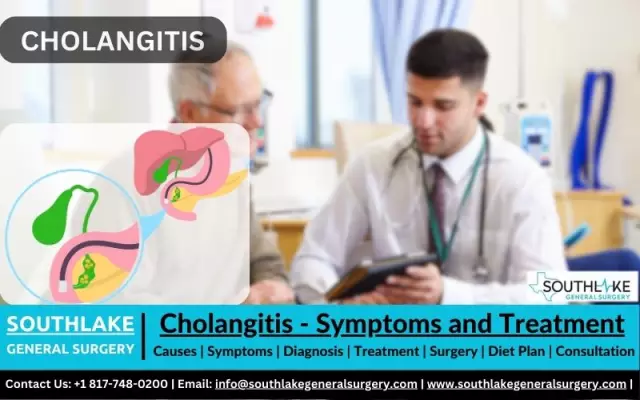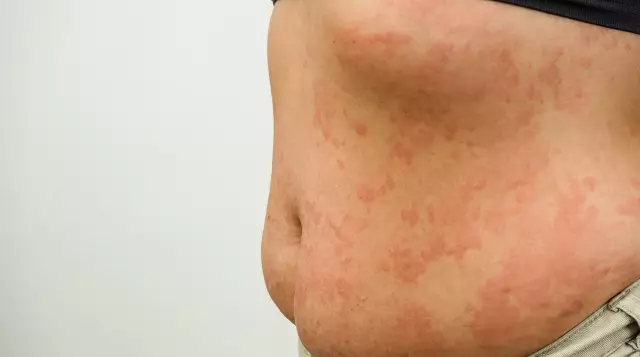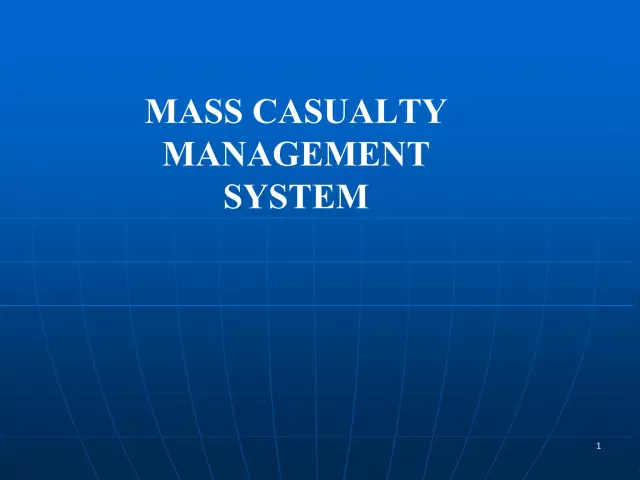- Author Rachel Wainwright [email protected].
- Public 2023-12-15 07:39.
- Last modified 2025-11-02 20:14.
Cholangitis

Cholangitis is an inflammation of the bile ducts. This is a severe disease that can be independent, but is more often combined with inflammation of the gallbladder or liver.
Cholangitis reasons
The main cause of cholangitis is a violation of the patency of the bile ducts and the addition of infection. Violation of the patency of the bile ducts often occurs with choledocholithiasis - the formation of gallstones in the biliary tract. Other causes of impaired bile outflow can be cicatricial narrowing of the biliary tract due to chronic cholecystitis, removal of the gallbladder (postcholecystectomy syndrome), cysts or tumors of the common bile duct.
Often, the outflow of bile is disturbed as a result of helminthic invasion. The bile ducts can be blocked by roundworms. Such parasitic diseases as opisthorchiasis, echinococcosis, schistostomiasis, giardiasis can also lead to cholangitis.
Infection in the biliary tract mainly comes from the intestine, since bile stagnation disrupts the mechanism that prevents the penetration of intestinal contents into the upper parts of the gastrointestinal tract. In addition to the ascending (intestinal) route of infection, there is also a descending route when the infection enters the biliary tract with the flow of blood or lymph from another inflammatory focus in the abdominal cavity.
Types of cholangitis
According to the nature of the course, acute and chronic cholangitis are distinguished.
Acute cholangitis, depending on the type of inflammation, can take the following forms:
- Catarrhal cholangitis, in which there is swelling of the mucous membrane of the bile ducts. This form, in the absence of treatment, turns into chronic inflammation, and further leads to cicatricial narrowing of the ducts;
- Purulent cholangitis. The bile ducts are filled with purulent discharge mixed with bile. This form often spreads to the gallbladder and liver, involving these organs also in purulent inflammation;
- Diphtheritic cholangitis. The mucous membrane of the biliary tract ulcerates and then necrotic, which leads to the destruction of the walls of the bile ducts and purulent fusion of the surrounding tissues, including the liver;
- Necrotizing cholangitis. It occurs when aggressive pancreatic enzymes enter the bile ducts, which leads to the development of areas of necrosis of the mucous membrane of the biliary tract.
Chronic cholangitis by the nature of the course can be latent (latent), recurrent, septic and abscess.
A special form of chronic cholangitis is sclerosing cholangitis. This is a primarily chronic inflammation that occurs without an infectious agent, presumably of an autoimmune nature. At the same time, inflammation occurs in the biliary tract, leading to sclerosis - hardening and overgrowth of the lumen of the ducts, which in turn leads to cirrhosis of the liver. Sclerosing cholangitis does not respond to treatment, has a slowly progressive course and, on average, leads to severe disorders with a possible fatal outcome within 10 years.
Cholangitis symptoms

Symptoms of cholangitis in acute form appear violently, fever appears with chills and pouring sweat, pain like biliary colic is quite intense, aching, localized in the right hypochondrium, sometimes radiating to the scapula and shoulder. This is accompanied by nausea, vomiting. The skin and sclera take on a yellow color, itchy skin appears.
Symptoms of acute cholangitis in elderly patients and children have some differences. In older people, pain may be absent, and with scanty symptoms of cholangitis, the inflammation nevertheless becomes severe, usually purulent.
Cholangitis in children in acute form is rare, mainly as a secondary infection (usually streptococcal) with another disease. Acute cholangitis in children is very rapid, the symptoms of cholangitis in this case are nonspecific and characteristic of any acute inflammation of the gastrointestinal tract, and therefore acute cholangitis in children can be mistaken for another gastrointestinal disease.
Chronic cholangitis symptoms are less pronounced, intense pain is characteristic only in the presence of stones in the bile ducts. The main symptoms of cholangitis in this case are general weakness and increased fatigue, unexplained periodic rises in temperature, and itching. Signs of cholangitis include thickening of the terminal phalanges of the fingers and redness of the palms.
Chronic cholangitis in children causes weight loss due to lack of appetite and nausea, constant intoxication leads to anemia, pallor or jaundice of the skin, the child's physical development slows down, there may be a lag in general development, chronic headaches appear.
Cholangitis diagnostics
The diagnosis is made on the basis of the characteristic symptoms of cholangitis, a thorough examination and data from hardware and laboratory tests:
- Ultrasound of the gallbladder, liver and bile ducts;
- Radioisotope study of the biliary tract;
- Intravenous cholangiography (fluoroscopy of the biliary tract with intravenous administration of a contrast agent, allowing you to see the intra- and extrahepatic ducts);
- Retrograde cholangiopancreatography (fluoroscopy of the biliary tract and pancreas with endoscopic administration of a contrast agent);
- Cholangiomanometry (measurement of pressure inside the bile ducts);
- Choledochoscopy (endoscopic examination of the bile ducts);
- General and biochemical blood test;
- Laboratory examination of bile.
Cholangitis treatment
Cholangitis can be treated conservatively or surgically, depending on the form of the disease. Treatment of cholangitis is carried out only in a hospital, due to the risk of developing severe complications - purulent abscesses of the liver and gallbladder, peritonitis, and in chronic cholangitis, cirrhosis.
Conservative methods of treating cholangitis are used when there is no mechanical obstruction to the outflow of bile along the biliary tract. In this case, antibacterial drugs are prescribed (broad-spectrum antibiotics and sulfonamides), drugs that reduce intoxication (intravenous hemodez, etc.), improve the outflow of bile, antispasmodics (for example, Duspatalin).

In the case when conservative treatment does not give results, as well as in all cases when it is impossible to create a normal outflow of bile with medications, they resort to surgical treatment of cholangitis. The method of choice at the present time, in the absence of contraindications (purulent, necrotic processes, abscesses), is the endoscopic technique.
This method allows for drainage of the bile ducts, removal of stones, elimination of stenoses (narrowings) without resorting to extensive abdominal surgery, which allows to reduce surgical trauma, avoid bleeding, and improve recovery. In the presence of more severe forms of cholangitis, an abdominal operation is performed, removing the areas that have undergone purulent fusion or necrotic decay. In the postoperative period, antibiotic therapy is prescribed.
YouTube video related to the article:
The information is generalized and provided for informational purposes only. At the first sign of illness, see your doctor. Self-medication is hazardous to health!






